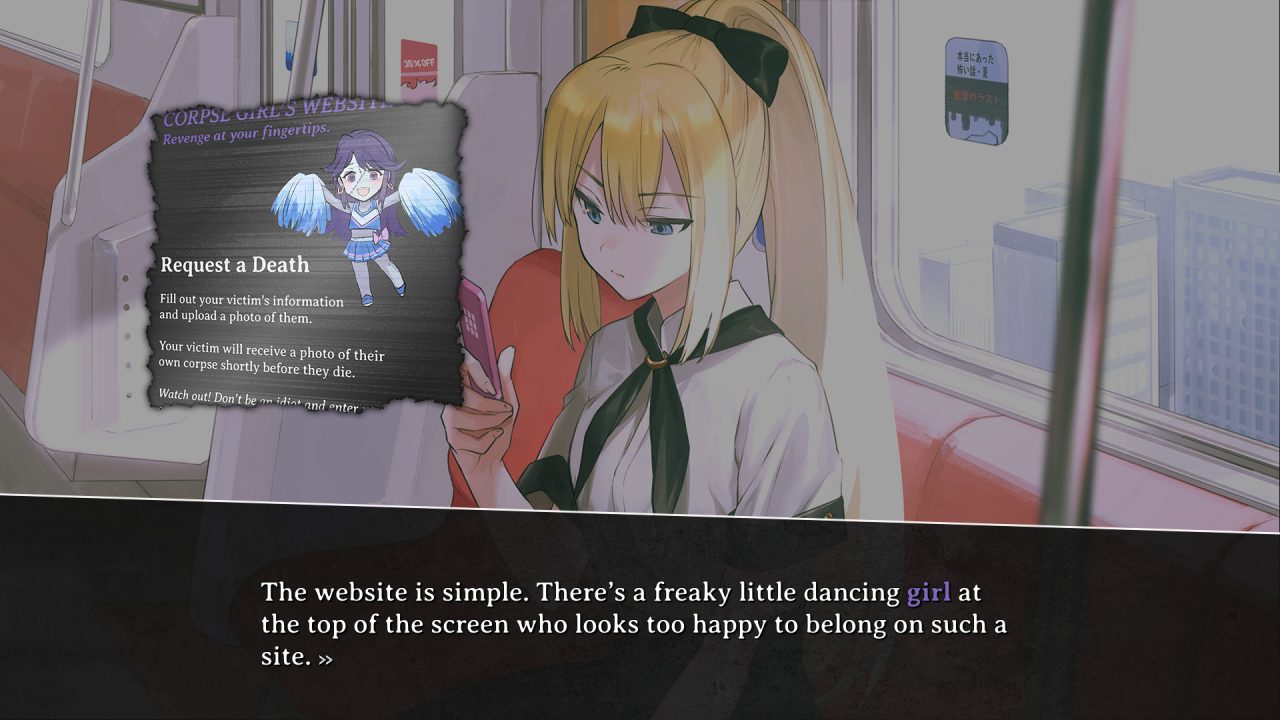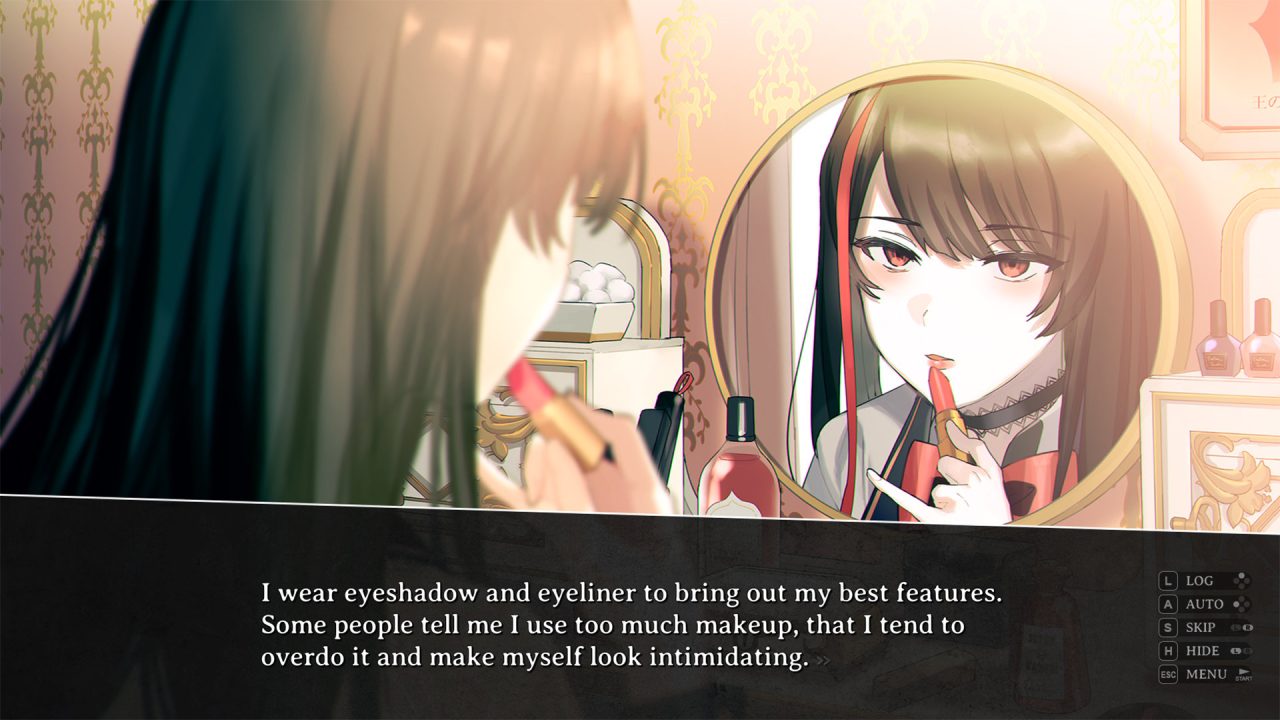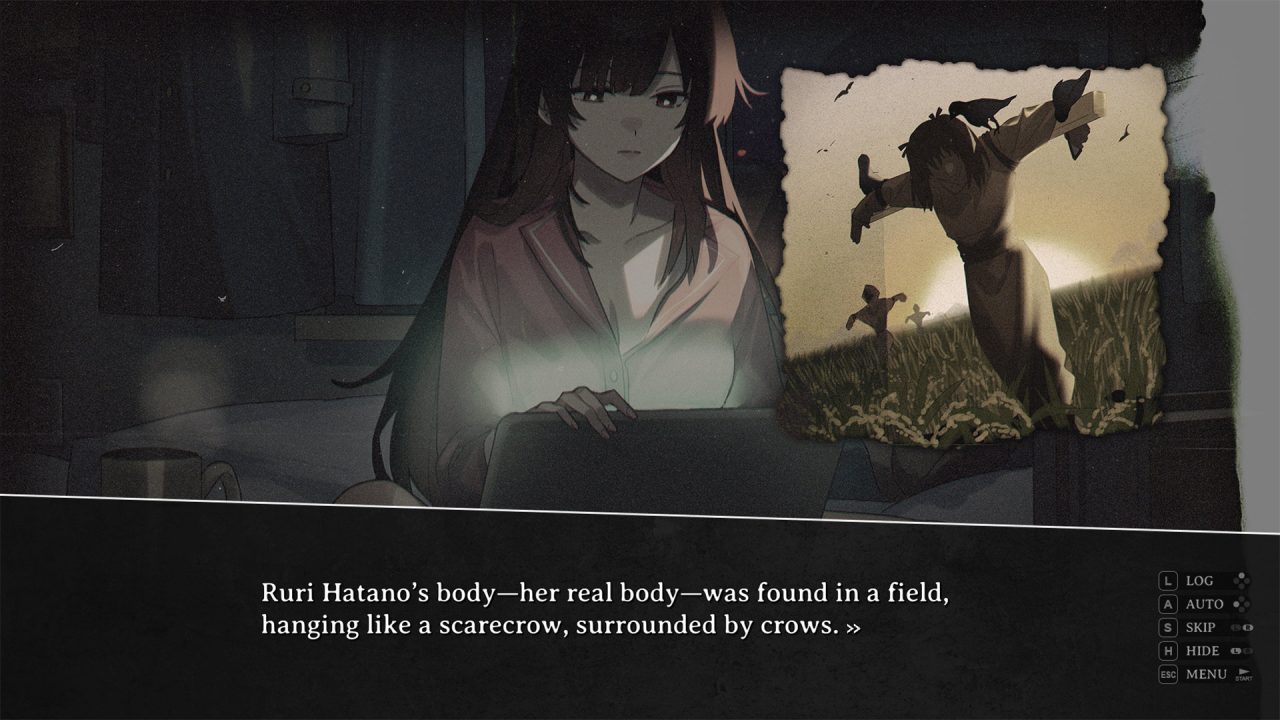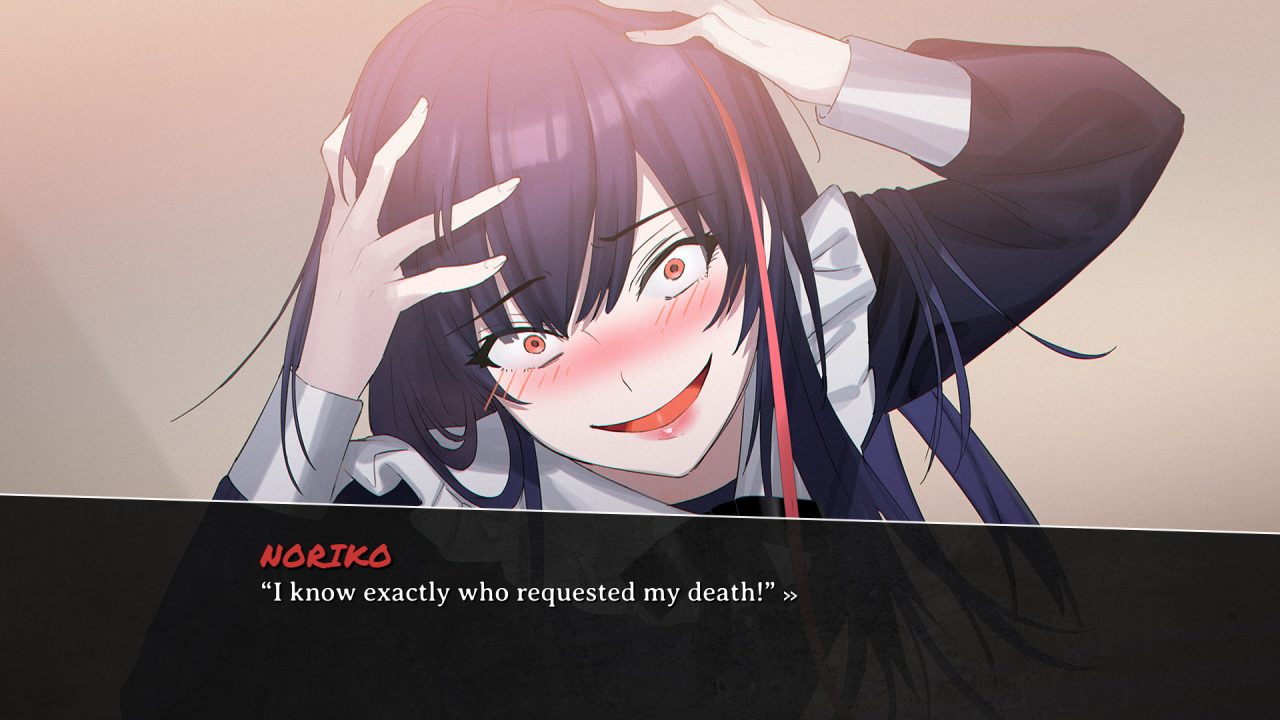River Crow Studio’s Corpse Factory asks readers to discard their sense of morality for a mere dozen hours to pose the question, “What if there was a way to request someone’s death?” In the world of Corpse Factory, such a service exists: Corpse Girl’s Website. All that’s needed is to visit said website, input the target’s phone number, and upload a photo of them. Within days, if not hours, the victim will receive a photo of their corpse with a timestamp of their upcoming death — a vision of the future, perhaps? While it may seem like a prank, the victim is soon released from this mortal coil in a coldly brutal, bloody, and grim fashion. It doesn’t matter who they are, what they’ve done, or if they even deserve it. Corpse Girl doesn’t care. Once the request is made, there is no going back. While the concept may seem similar to the thriller anime Death Note on the surface, it treks its own bloody path and toys with morality.
Many horror anime, visual novels, and games feature a protagonist fighting against a looming threat. The protagonist is usually the pure, innocent hero standing in contrast to an evil force. Demons, monsters, and killers are common tools that drive up suspense and encourage players to fear for the protagonist’s life and cheer for their success and survival. So what happens when the protagonist is the killer with zero sense of morality? What happens when they’re losing their mind and falling deeper into a violent psychosis that endangers everyone around them? Is it even possible to feel empathy, let alone sympathy, for such a vicious force of evil? My answer, surprisingly, was a resounding yes.

Corpse Factory follows the tale of Noriko Kurosawa, the self-proclaimed Corpse Girl. She started a website just over a year ago, aptly named Corpse Girl’s Website, to take requests for deaths. Her goal is to spread mayhem and exert power over people by striking fear into the hearts of others — all in the name of Corpse Girl. The protagonist’s broken moral compass and severe megalomania make her akin to a monster. Yet despite her encroaching madness, she is still just a human with her own array of problems. Corpse Factory touches on mental illness, stress, and trauma, albeit with a careful hand.
Upon starting Corpse Factory, players are met with a disclaimer. While the game is all about blood and gore, it takes a moment to inform players about the depictions of anxiety; obsessive-compulsive behavior; and suicidal thoughts, tendencies, and ideation. It urges readers to take a break if they’re feeling overwhelmed and to talk to someone, ideally a professional. River Crow Studio’s warning is an apt and welcome touch that goes beyond the usual warnings about violent gore that have desensitized many to both the gory content and the warnings. With the much-appreciated warnings in place, we’re ready to step into the world of Corpse Factory.
While the game is quite grim and macabre, it’s gorgeous on the visual front. The world is bright and colorful despite the game’s dark material. The characters are expertly designed with a wondrous style that breathes life into each one. Protagonist Noriko Kurosawa’s dark design consists of predominantly black shades with a bit of white and small touches of red. Her overall design is that of a pale and sickly girl who dresses and acts in a socially acceptable way while still pushing boundaries where possible. Noriko is, by all accounts, an office goth.

The rest of the cast receives the same vibrant design treatment as Noriko. Tomoe is a loud, fashionable, and colorful gal who speaks her mind and acts like a social tornado that just ran through a glitter factory. Kojiro is a haunting, terse, and creepy man who comes across as harmless but is the epitome of weird. His manner of speech is bizarre, and his thought process is jarring, though strangely relatable at times. Finally, Aoi and Shinya are both timid souls whose designs evoke their general fear of interaction while their color schemes invoke hesitation and uncertainty. These designs are wonderfully deceptive in ways that may only come to light once you dig into each character’s psyche.
Behind the characters are colorful and vivid backgrounds that give the setting a strong sense of existence. The world feels fleshed out, and the locales become increasingly familiar as scenes take place within them. The backgrounds themselves create tension, especially when the reader begins to associate specific locales with violent events. For example, a sudden shift over to a parking garage can give readers light anxiety, especially considering what happened there last time. Trepidation also comes from new areas, and the way each locale becomes a character in its own right is both laudable and impressive. Background artist Miura Yuichi’s work blends fantastically with character artist Kio’s wonderful designs. When the two merge together for pivotal story sequences, the result is a treat for the eyes — albeit a pretty bloody one.
Corpse Factory‘s writing is also quite impressive, with strong character and world designs at the forefront. As I read through the game, I was constantly guessing where things would go. Little twists and turns came when I least expected them, and the theories scribed in my head were often shattered. Corpse Factory shines brightest in its character writing. Writer and director Zak Ford evoked empathy and sympathy from me towards the deranged, havoc-wreaking Noriko. I also went from absolutely hating Tomoe to loving her once I saw her true colors. Finally, I was fascinated by Kojiro’s unsettling weirdness.

What adds most to these characters is the voice acting. RPG fans may know Noriko’s voice actress Erika Harlacher as Ann Takamaki from Persona 5. Tomoe is voiced by Faye Mata (Amane Doi from AI: The Somnium Files), and Kojiro by Aleks Le (Sonon Kusakabe from Final Fantasy VII Remake). Other notable voiced characters include Shinya, voiced by Sean Chiplock (Rean Schwarzer from Trails of Cold Steel), and Aoi by Brianna Knickerbocker (Hu Tao from Genshin Impact). The primary cast performs expertly, especially when it comes to pure emotion. Since many of the cast members have worked together on previous projects such as Death end re;Quest, it’s no surprise that they’re willing to scream and shout as characters lose their minds and wrestle with insanity.
When characters aren’t screaming at one another, the soundscapes of Corpse Factory are rather pleasant. Throughout most scenes, there is a peaceful and chill acoustic guitar playing in the background. It adds a pleasant atmosphere and evokes the feeling of stepping into the shade on a warm summer day. The soundtrack bursts into grungy and industrial aural affairs when things go south or drama unfolds. Pivotal and shocking moments are met with a choir-laden series of heavy drums and strings serving as a fitting backdrop to the high-stakes drama. Composer Alec Shea’s work is impressive, and tracks such as “Sarcophagus,” “Gray Ceiling,” and “Apotheosis” remain stuck in my head to this day.
When it comes to visual novels, there is often minimal gameplay to make up for lackluster soundtracks, mediocre writing, dull characters, or painful UIs. Therefore, these elements are subject to higher scrutiny. Though Corpse Factory excels in the former items, it also nails the latter with a stellar and stylish user interface. The message log is always a button or scroll away, the auto-play works quite well, and the text is easy to read thanks to the font choice and stylized textbox. One of my favorite things is something I didn’t use until a second playthrough: the skip button. I appreciated River Crow Studio including one because smoothly skipping through text helped me log achievements more quickly.

Corpse Factory does many, many things right. However, there are a scant few areas it falls flat in. Being a visual novel, there’s not much gameplay to criticize. Though most visual novels I’ve played contained multiple paths and meaningful choices, Corpse Factory is relatively linear with few choices. When a choice does come up, it only adds a few scenes to maybe give the player an achievement for bonding with said character. In my playthrough, I didn’t experience any particular dead-end paths or bad endings.
On the subject of endings, Corpse Factory has multiple endings: True, False, Hell, and Bonus. While I absolutely adore some of these endings, they still leave many questions unanswered and contain notable loose ends. For example, the Hell ending opens up way too many questions. Finally, there is a bonus mode that I’ll refrain from talking about simply due to how absurdly amusing it is. Upon starting it, I burst out laughing and found myself impressed with the levity that followed such a serious and grim tale.
Corpse Factory was a brisk twelve or so hours that had me hooked for every single minute. I thoroughly enjoyed stepping inside the minds of these broken, twisted, and bizarre characters that seem like irredeemable monsters on the outside. I felt anxious when characters were in danger, sad when they got hurt, and even frustrated when things didn’t go their way. Cheering for a group of villains was strange, yet they were so endearing that I couldn’t help but want them to succeed in their bloody and macabre pursuits.
Corpse Factory is a great visual novel and an incredibly interesting piece of fiction. It’s descriptive, creative, bloody, and most importantly: fun to read. It’s a bit frayed on the edges and leaves a few too many questions unanswered, but it has a hell of a lot of heart. Personally, I can’t wait to see what River Crow Studio does next.



